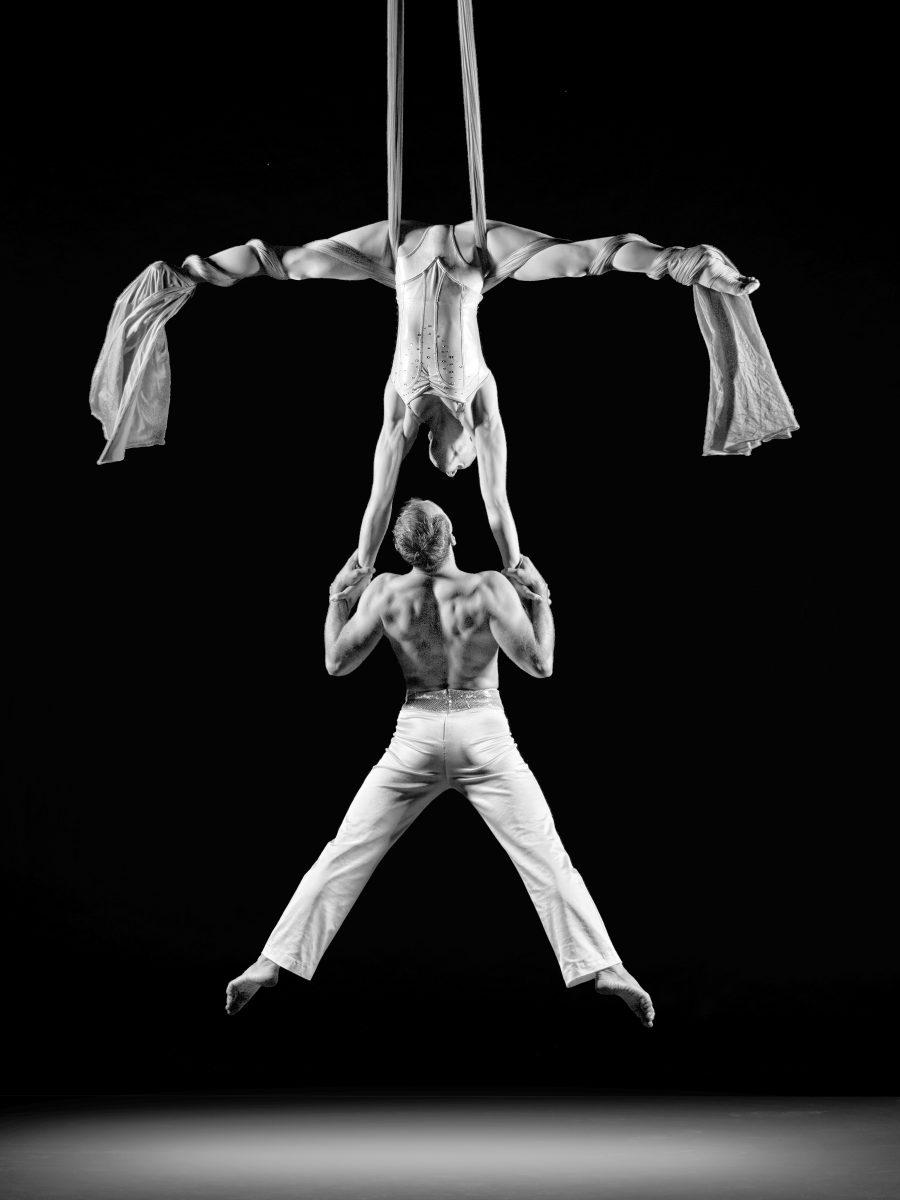In 2005, Bill Allen turned what he calls his “musical wiring” into a circus lifestyle. Allen, executive director and producer of Cirque de la Symphonie, was a College of Humanities and Social Sciences student in the mid-1970s and studied sociology, anthropology and psychology during his time at N.C. State.
Allen said he knew he couldn’t enter the business alone. He enlisted the help of famous circus artist Alexander Streltsov, and the duo became the face of Cirque de la Symphonie, a harmonious marriage of orchestra and cirque performances.
“I got embedded with a lot of symphony orchestras,” Allen said. “I thought if I was going to do something on a fine-arts level, [Streltsov] would be in a good position to keep me tied in to some of the best circus artists.”
Allen said Cirque de la Symphonie gave him the opportunity to truly become a part of the music world again and to do things he never thought imaginable.
“This gave me a chance to go back and sort of do some things in the music world that I didn’t really have a chance to do earlier in my life,” Allen said. “Going from that to this…it was a whole new world. What really drew me into it deeper and deeper was my musical wiring. Going into the orchestra world validated some of my own talents, and it gave me an opportunity to do things that I would have, probably, otherwise, never had the chance to do.”
Quickly taking off in their first year, the duo worked with the Houston Symphony.
“I thought if we were going to start as a company, then let’s start off with the biggest symphony in the United States,” Allen said. “At the time, the Houston Symphony was the largest symphony.”
After they sold out their first four concerts, word of Allen and Streltsov’s accomplishments spread like wildfire.
“It’s sort of a small world, and word gets around pretty fast,” Allen said. “Before we knew it, every symphony in the country wanted to work with us. We’re now working with orchestras for the fourth and fifth time.”
According to Allen, last season, Cirque de le Symphonie worked with 60 different orchestras around the world.
“It was more than one show a week,” Allen said. “We’re stacked up like that all the way through 2016 already. People just don’t get tired of it. I guess you could say there’s some sort of cirque-de-need.”
Allen said the idea that created Cirque de le Symphonie is constantly evolving.
“No matter how we continue to evolve, we stay true to the concept,” Allen said. “We’re the only cirque company in the world that works exclusively with orchestras. It’s kind of fun to know that while we didn’t help create the idea of the orchestra or the cirque, we were the first to really put the two together.”
According to Allen, there’s no single reason as to why this type of cirque performance is so popular. It just simply is.
“I wish I could tell you I’m a genius and this is exactly what I knew would happen, but I can’t,” Allen said. “We are very pleased, though.”
Allen said, in a world of entertainment competing for the viewers’ attention, it is important that there’s something in a Cirque de le Symphonie performance for all ages.
“It’s not only what you would expect— grandmother’s luring their grandchildren in to see an orchestra with the promise of seeing circus clowns,” Allen said. “Young adults come, too. College students, graduate students, people in their early 20s or 30s who have everything known to man competing for their entertainment dollars, they come to see it.”
With their performances everywhere from Sydney, Australia to Cape Town, South Africa selling out music halls, Allen said their program has proven its validation worldwide.
“We’ve gotten the same response in Cape Town, South Africa that we did in Philadelphia, Pennsylvania,” Allen said. “It’s been a fun ride, and we keep getting better at what we’re doing. We’ve got dozens of artists that want to be in the show and, like I said, there’s no end in sight.”








